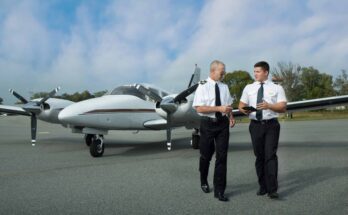Introduction to How to Choose an Aviation Training School in 2025
Becoming a pilot is more than a dream—it’s a commitment to precision, passion, and lifelong learning. One of the most important steps in your aviation journey is selecting the right aviation training school. With hundreds of options globally, choosing the best aviation institute can be overwhelming. This guide will help you navigate key factors such as accreditation, location, training aircraft, instructors, and costs to ensure you make a well-informed decision.
Whether you’re aiming for commercial pilot training, private licenses, or advanced certifications, the quality of your training will shape your aviation career. Let’s explore how to choose the right aviation training school in 2025 and beyond.
Why Choosing the Right Aviation Training School Matters
Your Career Depends on It
Your choice of school directly impacts:
-
License recognition globally.
-
Flight training quality and safety.
-
Employment opportunities after graduation.
-
Eligibility for scholarships or financial aid.
A substandard training school might cut corners, costing you time, money, and safety.
Building a Strong Foundation
Quality aviation training doesn’t just prepare you for exams—it builds the confidence and skills needed to handle real-life flying scenarios. The right school provides a strong foundation in both theory and practical flight hours, as well as career mentoring.
Key Factors to Consider When Choosing an Aviation Training School
1. Accreditation and Approvals
Why Accreditation Is Crucial
Ensure the school is approved by aviation regulatory bodies such as:
-
DGCA (India)
-
FAA (USA)
-
EASA (Europe)
This guarantees standardized training and ensures your license is internationally recognized.
What to Look For
-
Type of license they offer (PPL, CPL, ATPL).
-
ICAO compliance.
-
Airline partnerships or MOU with aviation authorities.
2. Reputation and Reviews
Do Your Research
Look into the school’s history and graduate success rate. Check:
-
Online reviews and forums like AvCanada, PPRuNe, or Reddit Aviation.
-
Alumni testimonials.
-
Employer feedback.
Reputation in the aviation community matters—a respected school can open job doors after graduation.
3. Experienced and Certified Instructors
Instructor-to-Student Ratio
A good instructor-to-student ratio (1:3 or better) ensures personal attention. Ensure instructors have:
-
Airline experience.
-
Updated certifications.
-
Friendly and professional teaching style.
A quality mentor can greatly enhance your learning experience.
4. Fleet and Facilities
Aircraft Condition & Types
Make sure the school maintains a modern fleet with various aircraft types such as:
-
Single-engine planes for PPL training.
-
Multi-engine planes for advanced ratings.
Look for:
-
Simulator availability (like Redbird or ALSIM).
-
Aircraft maintenance records.
-
Weather resilience and number of flyable days/year.
5. Location and Weather Conditions
Climate Affects Flight Hours
Aviation schools in regions with clear weather year-round (like Arizona, USA or Hyderabad, India) offer more flying days—accelerating your training and saving money.
Urban vs Rural
City-based schools may have better tech and connections but higher living costs. Rural schools might be more affordable but require travel. Weigh both options carefully.
6. Cost and Financial Aid
Compare Course Fees
Pilot training can cost anywhere from $40,000 to $100,000 or more depending on the country. Evaluate:
-
What’s included in the fee? (fuel, exam fees, uniform, accommodation?)
-
Pay-per-hour vs. package training.
-
Currency conversion if training abroad.
Scholarships & Loans
Some schools offer:
-
Scholarships based on merit or financial need.
-
Tie-ups with banks or government-sponsored education loans.
-
Airline cadet programs with guaranteed placement after training.
7. Job Placement and Airline Tie-Ups
Graduate Career Support
Schools with airline tie-ups often offer fast-tracked hiring options. Look for:
-
Internship programs.
-
Direct Entry Pilot programs (cadet schemes).
-
High placement rates.
Ask:
-
How many students got placed last year?
-
Are there airline assessments on campus?
8. International Student Support (if studying abroad)
Visa and Accommodation Assistance
If you’re considering overseas aviation training:
-
Check for visa assistance.
-
Is housing included or nearby?
-
Cultural support and local networking opportunities.
Red Flags to Watch Out For
1. Unrealistically Low Prices
Cheap may mean poor aircraft maintenance or unqualified instructors. Always compare prices with industry averages.
2. No Clear Refund Policy
Ensure the school has a transparent policy in case you withdraw or if they delay training.
3. Limited Flying Hours or Poor Scheduling
Avoid schools that delay flying due to aircraft unavailability or lack of instructors. This can stretch a 12-month course into years.
Top Questions to Ask Before Enrolling
Before You Sign the Contract
-
Is the school accredited by a recognized aviation authority?
-
How many flight hours are included in the fee?
-
Are simulator hours counted towards total training?
-
What’s the student-to-aircraft ratio?
-
Can I speak with current students or alumni?
Summary
Choosing the right aviation training school is not just about affordability or location—it’s about ensuring you receive comprehensive, high-quality training that sets you up for a successful flying career. From certifications and aircraft to instructors and career placement, every factor plays a vital role in shaping your future as a pilot.
Conclusion
Pilot training is one of the most important investments of your life, both in terms of time and money. Choosing the right aviation school can mean the difference between a thriving career in the skies or years of struggling to get certified and employed.
Take your time, do your research, visit campuses if possible, and ask tough questions. A good school will always be transparent and supportive. With the right training and determination, your dream of becoming a pilot is within reach.
Let me know if you’d like this article turned into a WordPress blog post, PDF, or if you need an SEO meta description and keywords added too.

